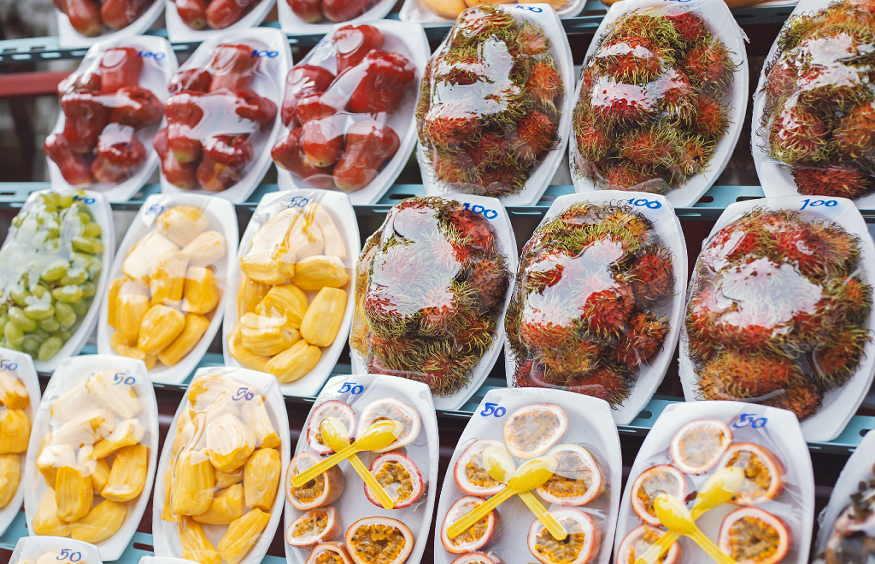
10 Benefits of Food Packaging in Reducing Food Waste
Food waste is a pressing global issue, with approximately one-third of all food produced for human consumption going to waste each year. This not only has significant environmental impacts but also contributes to economic losses and food insecurity. One effective strategy to combat this problem lies in the realm of food packaging. Innovative food packaging products can play a crucial role in reducing food waste at various stages of the supply chain, from production to consumption. In this article, we will explore ten key benefits of food packaging in reducing food waste, highlighting how thoughtful design and materials can make a significant difference.
1. Extended Shelf Life
One of the primary benefits of food packaging is its ability to extend the shelf life of products, which is crucial in reducing food waste. Advanced packaging technologies, such as vacuum sealing and modified atmosphere packaging (MAP), play a significant role in preserving freshness. Vacuum sealing removes air from the package, creating a vacuum that minimizes exposure to oxygen, a key factor in spoilage. By eliminating oxygen, vacuum-sealed products are less prone to oxidation, mold growth, and bacterial contamination.
Modified atmosphere packaging enhances this process by altering the composition of gases within the packaging. By replacing oxygen with inert gases like nitrogen or carbon dioxide, MAP slows down the respiration rate of fruits and vegetables, delaying ripening and spoilage. These technologies effectively create an environment that helps maintain the quality and safety of food products for longer periods.
As a result, consumers have more time to use their products before they expire, significantly reducing the likelihood of food waste. This extended shelf life not only benefits consumers by providing more flexibility in meal planning but also contributes to sustainability efforts by minimizing the amount of food discarded due to spoilage. Ultimately, effective food packaging is essential for promoting responsible consumption and reducing waste in the food supply chain.
2. Portion Control
Packaging can be designed to promote portion control, which is essential for minimizing waste at home. Single-serving packages or multi-pack options allow consumers to open only what they need at a given time. This approach is particularly effective for perishable items like dips or snacks, where opening a larger container may lead to spoilage before the product is fully consumed. By providing manageable portions, brands can help consumers avoid over-purchasing and wasting food.
3. Enhanced Product Visibility
Transparent packaging or clear labeling can enhance product visibility, allowing consumers to see what they are purchasing and how much is left. This transparency encourages consumers to use products before they expire, as they can easily monitor their inventory at home. When consumers are aware of what they have on hand, they are less likely to forget about items and let them go to waste.
-
Smart Packaging Solutions
The emergence of smart packaging technologies offers exciting opportunities for reducing food waste. These innovations include freshness indicators that change color when a product is nearing its expiration date or sensors that monitor temperature and humidity levels. By providing real-time information about the condition of food products, smart packaging helps consumers make informed decisions about when to use or discard items, ultimately reducing waste.
5. Improved Transportation and Storage
Effective food packaging boxes wholesale enhance the transportation and storage of food products, minimizing damage during transit and ensuring that products arrive in optimal condition. Durable packaging materials protect items from physical damage and contamination, reducing the likelihood of spoilage before reaching consumers. By improving logistics and reducing losses during transport, effective packaging contributes to overall reductions in food waste.
6. Consumer Education
Food packaging serves as an important communication tool that can educate consumers about proper storage methods, usage instructions, and expiration dates. Clear labeling on how to store items or suggestions for using leftovers can empower consumers to make better choices that prevent waste. When consumers are informed about how to handle their food properly, they are more likely to consume it before it spoils.
7. Sustainable Materials
Using sustainable packaging materials can also contribute to reducing food waste by encouraging responsible consumption practices. Biodegradable or recyclable materials resonate with environmentally conscious consumers who are more likely to appreciate brands that prioritize sustainability. By promoting eco-friendly practices through their packaging choices, brands can foster a culture of mindfulness around both food and packaging waste.
8. Reducing Over-Purchasing
Effective packaging design can influence consumer behavior by encouraging smaller package sizes or variety packs that cater to different needs. When products are offered in smaller quantities or mixed assortments, it reduces the temptation for consumers to buy more than they can realistically consume. This strategy helps mitigate over-purchasing—a significant contributor to household food waste.
9. Improved Food Safety
Food safety is paramount in preventing waste due to spoilage or contamination. Packaging innovations such as antimicrobial films and protective barriers help maintain product integrity by preventing microbial growth and extending shelf life. Ensuring that food remains safe for consumption not only reduces waste but also enhances consumer trust in the brand.
10. Collaboration Across the Supply Chain
Finally, effective food packaging requires collaboration among various stakeholders in the supply chain—producers, manufacturers, retailers, and consumers alike. By working together to optimize packaging solutions that prioritize freshness and usability, all parties can contribute to a reduction in overall food waste. This collaborative approach fosters innovation and encourages shared responsibility for minimizing waste throughout the entire lifecycle of food products.
In conclusion, food packaging in a paper cup company plays a vital role in reducing food waste through various strategies that enhance shelf life, promote portion control, improve visibility, and ensure safety. By leveraging advanced technologies and sustainable materials while educating consumers about proper usage and storage practices, brands can significantly mitigate the environmental impact associated with wasted food. As awareness around food waste continues to grow, investing in effective packaging solutions will be essential for creating a more sustainable future while addressing one of the most pressing challenges facing our global food system today.






